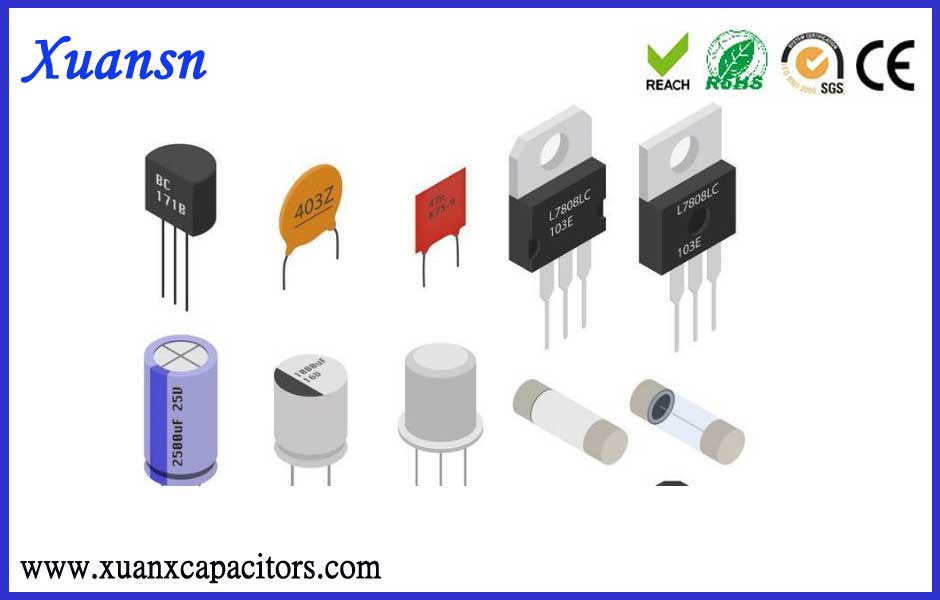Engaged in the electronics industry, there is an indescribable feeling for all kinds of electronic components. For engineers engaged in the electronics industry, electronic components are like the daily rice imported by people. They need to be touched every day, and they need to be used every day. Yes, but in fact, many engineers inside the door do not necessarily understand. Here are the top ten electronic components commonly used by engineers in the electronics industry, as well as related basic concepts and knowledge, and review them with everyone.
- Resistance
Resistance, because the substance hinders the current, so it is called the resistive substance under the action. The resistance will cause a change in the amount of electron flow. The smaller the resistance, the larger the electron flux, and vice versa. A substance without resistance or resistance is called an electrical conductor, or a conductor for short. A substance that cannot form a current transmission is called an electrical insulator, or simply an insulator.
2. Capacitance
Capacitance refers to the amount of charge stored at a given potential difference; denoted as C, the international unit is Farad (F). In general, the charge is forced to move in the electric field. When there is a medium between the conductors, the charge is prevented from moving and the charge is accumulated on the conductor; the cumulative storage of charges, the most common example is two parallel metals. board. It is also a common name for capacitors.
3. Crystal diode
 Semiconductor terminal devices in crystaldiodes solid state electronic devices. The main feature of these devices is their non-linear current-voltage characteristics. Since then, with the development of semiconductor materials and process technology, a variety of crystal diodes with various structures and different functional uses have been developed using different semiconductor materials, doping profiles, and geometric structures. The materials of manufacture are germanium, silicon and compound semiconductors. Crystal diodes can be used to generate, control, receive, transform, amplify signals, and perform energy conversion.
Semiconductor terminal devices in crystaldiodes solid state electronic devices. The main feature of these devices is their non-linear current-voltage characteristics. Since then, with the development of semiconductor materials and process technology, a variety of crystal diodes with various structures and different functional uses have been developed using different semiconductor materials, doping profiles, and geometric structures. The materials of manufacture are germanium, silicon and compound semiconductors. Crystal diodes can be used to generate, control, receive, transform, amplify signals, and perform energy conversion.
4. Zener diode
Zener diode (also known as Zener diode), this diode is a semiconductor device with high resistance until the critical reverse breakdown voltage.
5. Inductance
Inductance: When the coil passes current, a magnetic field induction is formed in the coil, which in turn generates an induced current to resist the current flowing through the coil. We refer to this interaction of current and coil as the electrical inductive reactance, which is the inductance, in units of “Henry” (H). This property can also be utilized to make an inductive component.
The basic unit of inductance is: Hen (H) The conversion unit is: 1H=103mH=106uH.
6. Varactor diode
Varactor Diodes are also known as “variable reactance diodes”. It is a diode made by the dependence of the PN junction capacitance (barrier capacitance) and its reverse bias voltage Vr, and its structure is as shown on the right.
7. Crystal triode
The crystal triode is one of the basic components of semiconductors and has a current amplification function, which is the core component of electronic circuits. The triode is made up of two closely spaced PN junctions on a semiconductor substrate. The two PN junctions divide the positive block semiconductor into three parts, the middle part is the base area, and the two sides are the emitter area and the collector area, and the arrangement is PNP. And NPN two.
8. Field effect transistor
Field Effect Transistor (FET) is abbreviated as FET. Conductors are involved in majority conduction, also known as unipolar transistors. It belongs to a voltage controlled semiconductor device. It has high input resistance (108~109Ω), low noise, low power consumption, large dynamic range, easy integration, no secondary breakdown, wide safe working area, etc. It has become a powerful bipolar transistor and power transistor. competitor.
9. sensor
A sensor is a physical device or biological organ that detects and senses external signals, physical conditions (such as light, heat, humidity) or chemical components (such as smoke) and transmits the detected information to other devices or organs.
10. Transformer
Transformer is a device that uses the principle of electromagnetic induction to change the AC voltage. The main components are the primary coil, the secondary coil and the core (core). In electrical equipment and wireless circuits, it is often used as lifting voltage, matching impedance, and safety isolation. In the generator, whether the coil moves through the fixed coil through the magnetic field or the magnetic field, the potential can be induced in the coil. In both cases, the value of the magnetic flux is constant, but the number of magnetic fluxes intersecting the coil is Change, this is the principle of mutual induction. A transformer is a device that uses electromagnetic mutual induction to transform voltage, current, and impedance. The functions of the transformer mainly include: voltage conversion; current conversion, impedance transformation; isolation; voltage regulation (magnetic saturation transformer).




